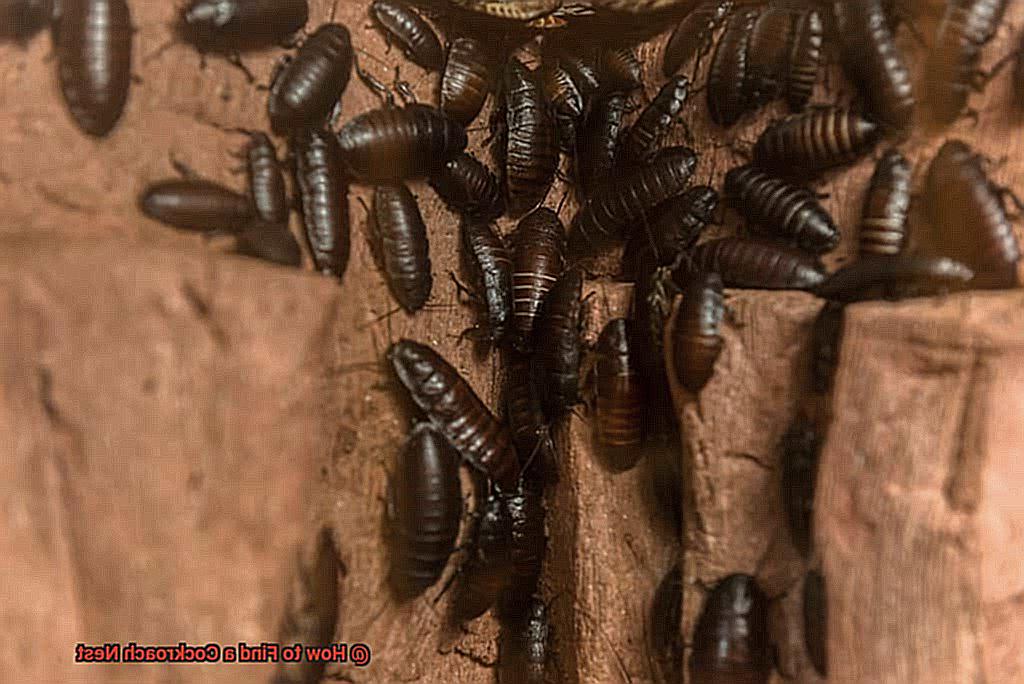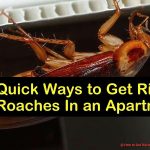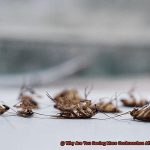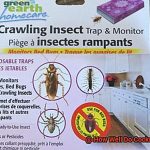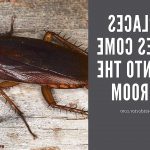Have you ever been startled awake by a scuttling sound in your home? If so, there’s a good chance you have a cockroach infestation. But how can you tell where they’re nesting?
The answer is to identify their nest. Cockroaches are nocturnal creatures that prefer dark and damp places for breeding and hiding.
Look for them in attics, basements, bathrooms, kitchens, even behind walls or furniture. Knowing where to search is essential if you want to get rid of them quickly and effectively.
This blog post will give you the lowdown on spotting a cockroach nest. We’ll also look at the best ways to get rid of these pests once you’ve identified their hideout.
So, if you’re looking for answers on finding a cockroach nest, read on. A strong smell coming from one area of your house is one of the most common signs of a nearby cockroach nest.
When they gather together, cockroaches produce an unpleasant odor that can travel through walls and floors. In addition, if you notice more roaches in your home or see droppings or egg cases around your house, it could be that there’s a nest nearby.
By understanding their behavior and noticing any changes in activity levels, you’ll be able to detect their nesting area and take action against them fast and efficiently.
Where Do Cockroaches Most Commonly Nest?
Contents
- 1 Where Do Cockroaches Most Commonly Nest?
- 2 How to Locate a Cockroach Nest
- 3 Following the Trail of Droppings
- 4 Identifying the Musty or Oily Odor
- 5 Using Sticky Traps to Catch Roaches
- 6 Using a Flashlight to Search for Roaches at Night
- 7 What to Do When You Find a Cockroach Nest
- 8 Preventing Future Infestations
- 9 Conclusion
Cockroaches are notoriously hard to get rid of, making it essential to pinpoint where they’re nesting.
Typically, they prefer warm and damp areas such as kitchens, bathrooms, and the laundry room due to the presence of water and steam generated by appliances like washing machines, dishwashers, and stovetops. However, they can also hide in less obvious places like walls and inside appliances such as microwaves and toasters.
If you’re on the lookout for cockroaches, look for signs of their presence such as droppings or musty odors. During the night, use a torch to search for them in dim areas.
Once you’ve found their nest, take immediate action to eliminate the infestation before it gets any worse – this could include sealing up cracks and crevices, using bait traps, or following strict cleaning procedures.
How to Locate a Cockroach Nest
Cockroaches are masters of disguise and can be difficult to spot. However, with a little bit of effort, you can locate the nest and take steps to eliminate it. Here are five ways to find a cockroach nest:
Follow the Trail
Look for signs of cockroach activity such as droppings, shed skin, or egg cases and follow the trail to determine their origin.
Sniff out the Nest
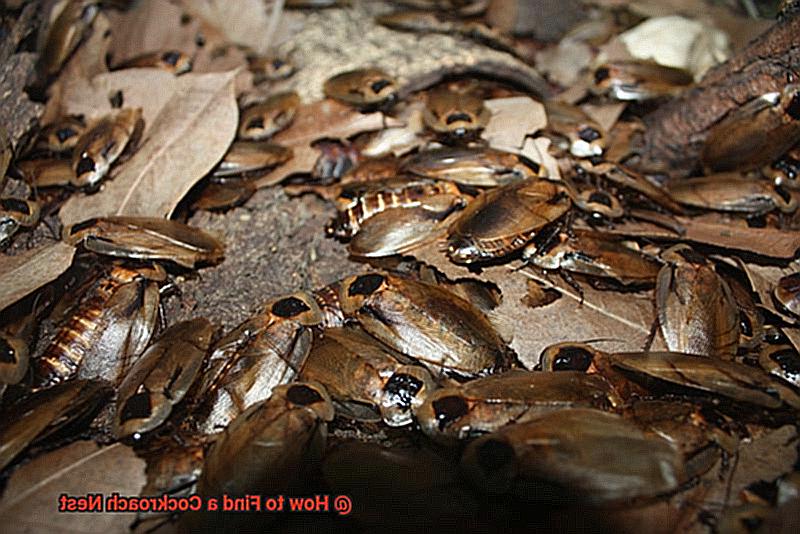
Cockroaches have a distinct musty odor that smells like chemicals or spoiled food. If you smell this unpleasant scent in your house, it could be an indication of a nearby cockroach nest.
Shine a Light
Use a flashlight to inspect dark corners and hard-to-reach areas where cockroaches may be hiding during the day. Look for cracks in walls or floors, behind baseboards, or under appliances.
Set Sticky Traps
Sticky traps are an effective way to trap roaches that are wandering around your home. Place them in areas where you have seen roaches before and wait for them to be spotted – then follow their trail to find the nest.
Call an Expert
If you suspect that you have a large infestation or if you’re unable to locate the nest on your own, it’s best to contact a professional pest control service that has the expertise and equipment needed for successful elimination of cockroaches from your home.
Finding a cockroach nest can be challenging, but with these tips, you will increase your chances of locating it quickly and efficiently.
Following the Trail of Droppings
If you’re trying to locate a cockroach nest, following the trail of droppings is a great place to start.
Cockroaches often leave droppings near their hiding spots or paths to food and water sources. These droppings are usually black or brown and around 2mm wide with a cylindrical shape.
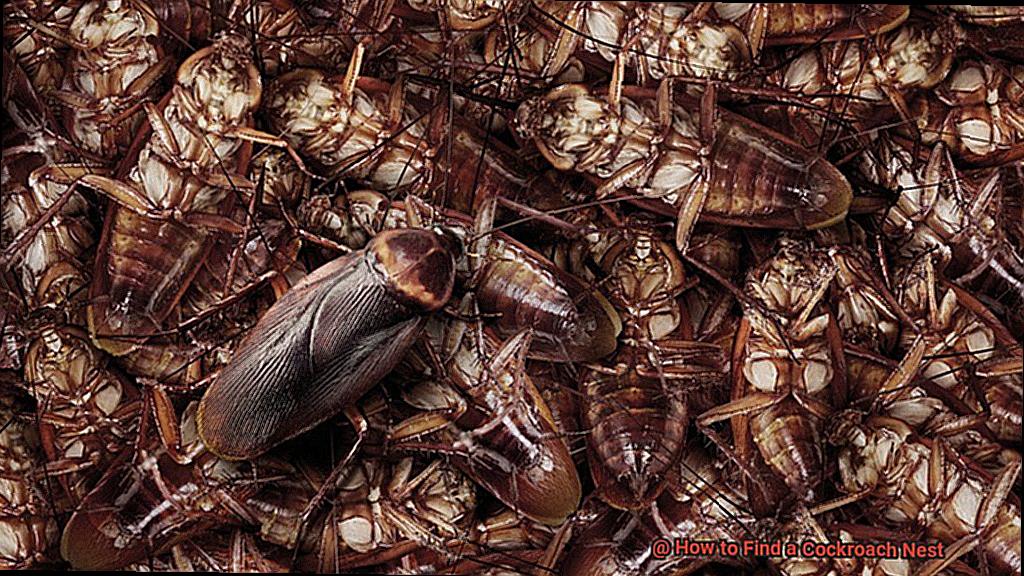
Start by searching for some visible droppings near their hiding spot in your home, then look for more droppings or other signs of cockroach activity such as egg cases or shed skin. It’s important to clean up the droppings using a disinfectant and gloves to prevent any risk of diseases.
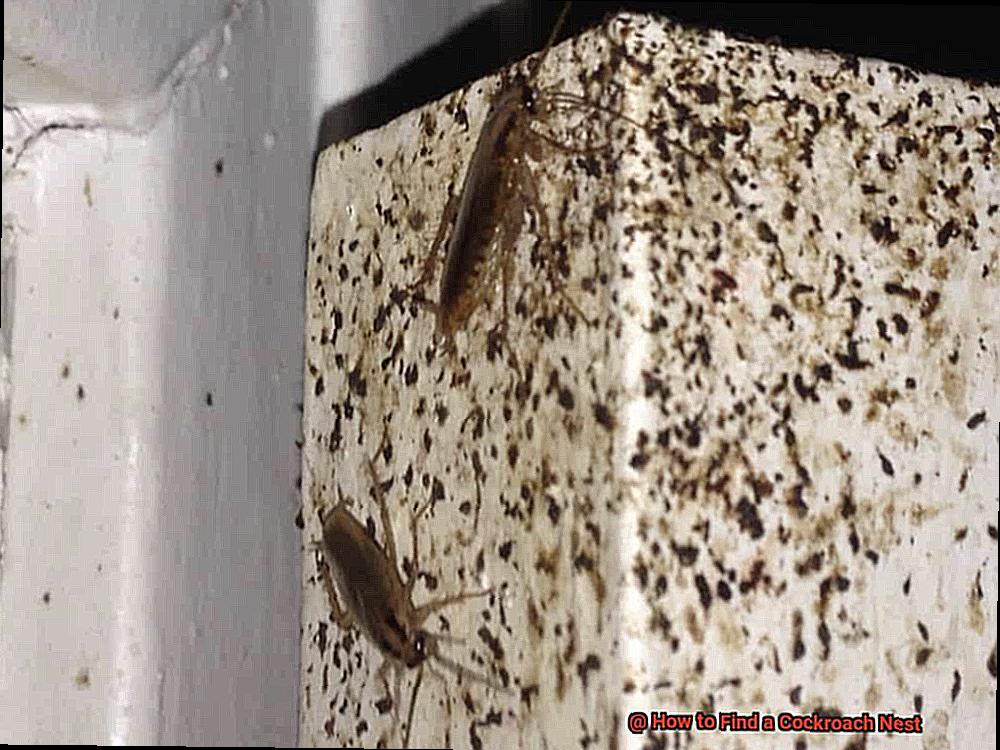
Not only do roach droppings carry bacteria, but they also create a strong odour that attracts other cockroaches to the area. Once you have spotted the trail of droppings, you can use this information to locate the nest by following it backward.
The nest can be hidden in a nearby crevice or crack, so be sure to check all possible areas. If you do find a nest, act quickly.
Cockroach nests will grow exponentially and spread throughout your home in no time if left unchecked.
Identifying the Musty or Oily Odor

The musty or oily odor produced by cockroaches is unmistakable and can be used to identify a nest.
This odor is often compared to a greasy kitchen smell, and it’s typically stronger in areas that have been infested for a long time. If you detect this odor in your home, it is likely that there is a cockroach nest nearby.
When searching for the nest, it is important to take note of any musty or oily odor present in the room or area. A flashlight can also be used to inspect hidden areas around the house, such as behind refrigerators and cabinet doors.
If you find any signs of cockroach activity, such as droppings, eggs, or shed skins, it is highly likely that there is a nest nearby. Identifying the musty or oily odor is an effective way of finding a cockroach nest and taking quick action to prevent an infestation from getting out of control.
Using Sticky Traps to Catch Roaches
Sticky traps are a simple and effective way to capture and control roach infestations. Also known as glue traps, sticky traps immobilize roaches so they can no longer cause harm or reproduce.
These traps come in different sizes and shapes, making them easy to place in high-traffic areas such as corners, behind furniture, cabinets, and appliances. Using sticky traps is also beneficial because it helps identify the extent of the infestation.
When placed strategically, you can count the number of roaches captured over a period of time. Large infestations will often result in continuous capture, indicating that more measures need to be taken.
Sticky traps offer an additional advantage: they are safer than chemical pesticides that can harm pets and humans. Plus, these traps require no setup or bait – once used, they can be disposed of in the trash safely.
It is important to note that sticky traps are not a long-term solution but rather a temporary fix.
Using a Flashlight to Search for Roaches at Night
Searching for roaches at night with a flashlight can be an effective way to find them and their nests.
Roaches are nocturnal creatures, so using a flashlight to search during the night increases the chances of finding them. Make sure you have a bright flashlight with a strong beam so that you can see into dark crevices and corners.
Start by turning off all lights in the room and then begin searching in areas where roaches are likely to hide, such as under appliances, in cabinets, and behind furniture. Roaches prefer dark, humid places, so pay particular attention to areas that are damp or have water sources nearby.
Also take note of any roach sightings during the day as this can help you narrow down their location. Look for signs of roach activity, such as droppings or egg casings, as this can also help you pinpoint their hiding places.
When you do find a nest, it’s important to take action immediately as they can quickly multiply. Use a pesticide spray or bait to kill the roaches and their eggs.
You can also use a vacuum cleaner to remove any visible roaches and their eggs.
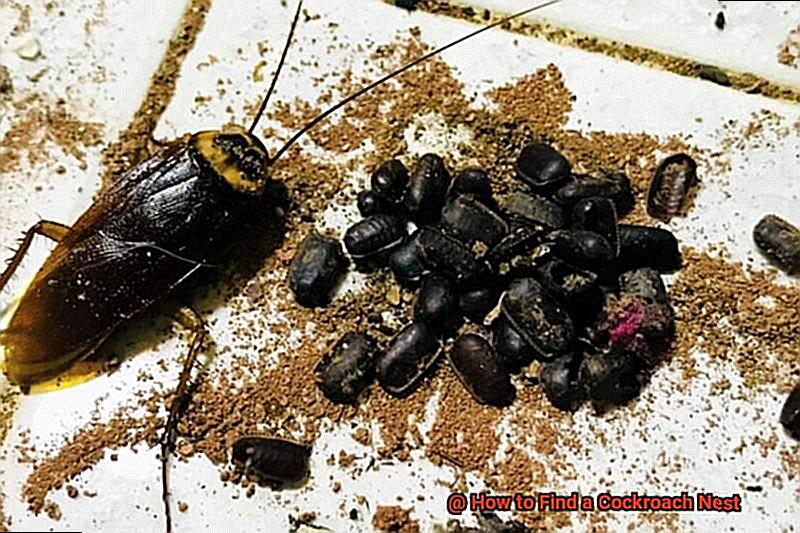
What to Do When You Find a Cockroach Nest
Finding a cockroach nest in your home can be a daunting experience, but with the right approach and persistence, you can take back control of your home from these pesky pests. Here are five steps to help you get rid of the infestation:
Identify the Nest
The first step is to identify the nest. Look for signs of cockroach activity such as droppings, cast skins, and egg cases in dark, warm, and moist areas where cockroaches are likely to hide. You may also detect an unpleasant musty or oily odor that indicates the presence of a cockroach nest.
Treat the Infestation
Once you have identified the type of cockroach present in your home, you can start to treat the infestation. This may involve applying insecticides, setting traps or baits, or using natural remedies like boric acid. If you are unsure about which method is best for your situation, consider calling in a professional pest control specialist who will have access to more potent pesticides and equipment that may not be available to the general public.
Prevent Future Infestations
To prevent future infestations it’s important to seal up cracks and crevices that could provide entry points for cockroaches, keep your home clean and free of clutter, and regularly inspect for signs of new infestations. Additionally, maintain good sanitation habits by disposing of food waste properly and promptly, as well as keeping kitchens and other areas clean and dry.
Call In A Professional
In some cases it may be necessary to call in a professional pest control service to completely eliminate the infestation. A professional pest control service can provide a more thorough treatment plan as well as ongoing monitoring and preventative measures if needed.
Take Action Immediately
Finally, remember that time is critical when dealing with a cockroach infestation; they reproduce quickly so one nest can quickly turn into a full-blown problem if left unchecked.
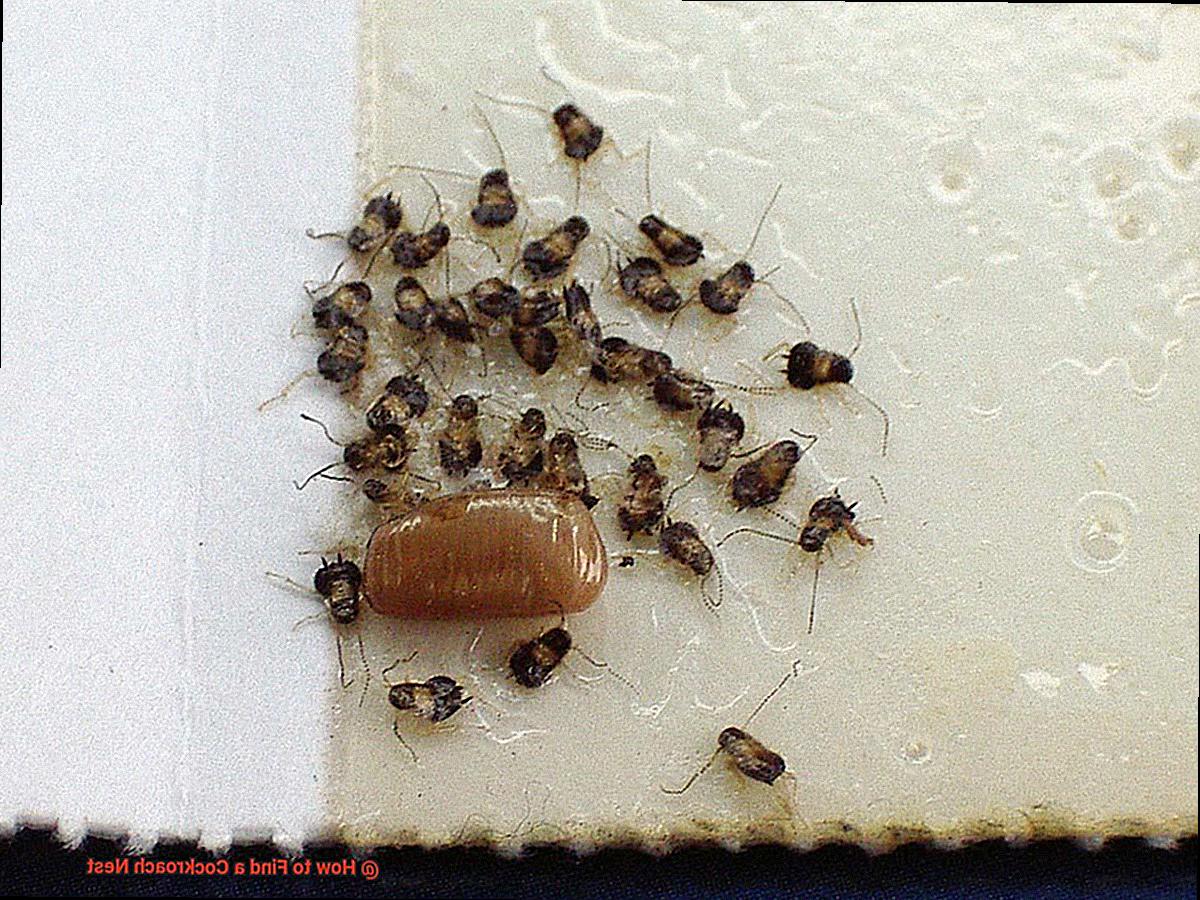
Preventing Future Infestations
If you’ve ever had to deal with a cockroach infestation, you know how important it is to avoid future infestations.
These pesky critters can quickly turn a home into a nightmare, so it’s essential to take preventative measures. Here are some tips for preventing future cockroach infestations.
First and foremost, keep your house and environment clean and dry. Cockroaches love warm and moist environments that offer easy access to food sources.
Make sure there are no piles of clutter or garbage that could provide them with shelter or food. Next, inspect your house for any potential entry points, such as gaps in walls, windows, or doors.
Treating these areas with pesticide sprays or baits can help reduce the population of cockroaches and prevent further infestations. It’s also important to store food and garbage in sealed containers and dispose of them regularly.
Finally, if the problem persists despite your best efforts, consider hiring a professional pest control company.
l-kXfEmupXc” >
Conclusion
Cockroaches are a dreaded presence in any home.
But, with the right knowledge and techniques, homeowners can take back control of their space. To find a cockroach nest, start by following droppings or detecting the musty or oily odor they emit.
Sticky traps are also an effective way to catch roaches wandering around your house. Use a flashlight to locate nests at night.
If you have found the nest, act quickly to eliminate the infestation with insecticides or natural remedies such as boric acid. To avoid future problems, seal cracks and crevices that could be entry points for cockroaches, keep your house organized and free of clutter, and check for signs of new infestations daily.
In some cases, it may be best to call in a professional pest control company for complete eradication of these rodents.

